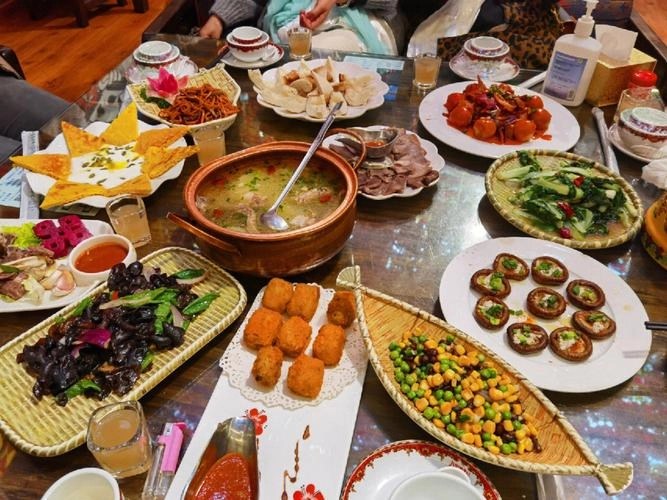进入甘苏藏族美食中心的烹饪之旅: tsampa配黄油茶和藏族血肠
As a gastronomy professional, I am thrilled to delve into the rich and diverse culinary traditions of Gansu’s Wuwei City, where the Tibetan culture is deeply ingrained. Among the many delicacies that this region offers, none stand out more than the staple dish of Tsampa, accompanied by the warming Butter Tea and the unique Tibetan Blood Sausage. Let’s embark on a gastronomic exploration of these traditional foods, starting with their origins and cultural significance.
**起源和文化背景:**
坦帕, a dish made from roasted barley flour, is not just a food but a symbol of Tibetan resilience and adaptability. It has been a dietary mainstay for centuries, reflecting the harsh yet beautiful environment of the Tibetan Plateau. 黄油茶, or Po Cha, is an integral part of Tibetan hospitality, often served to guests as a gesture of warmth and respect. The Tibetan Blood Sausage, while it may seem unusual to some, is a testament to the resourcefulness of Tibetan cuisine, utilizing every part of the animal in a delicious and nutritious way.
**成分和准备:**
The making of Tsampa involves the use of high-quality roasted barley flour, which is then mixed with butter tea to form a dough-like consistency. The butter tea itself is a blend of black tea, yak butter, 和盐, creating a rich and creamy beverage that is both invigorating and comforting. For the Tibetan Blood Sausage, the key ingredients include猪血 (pig’s blood), barley flour, and various seasonings, all stuffed into a casing and then boiled or steamed.
**质地和外观:**
Tsampa has a coarse and grainy texture, with a slightly nutty flavor from the roasted barley. When mixed with butter tea, it forms a moist, dense paste that is both filling and satisfying. The appearance of Tsampa is rustic and earthy, often served in a bowl or directly on the palm, ready to be eaten with the fingers. Butter Tea has a creamy, golden hue, with a frothy top that is a result of the churning process. Tibetan Blood Sausage, 一旦煮熟, has a smooth, dark red color and a firm yet tender texture.
**招牌菜:**
The combination of Tsampa with Butter Tea is a classic representation of Tibetan cuisine, offering a balance of flavors and textures. As for the Tibetan Blood Sausage, it can be served on its own as a main dish or as an accompaniment to other Tibetan staples such as Thukpa (Tibetan noodle soup) or Shapaley (Tibetan meat pies).
**烹饪特征:**
The beauty of Tibetan cuisine lies in its simplicity and the use of local, sustainable ingredients. Tsampa is not only nutritious but also easy to prepare, making it ideal for the nomadic lifestyle. 黄油茶, with its high fat content, provides much-needed energy and warmth in the cold climate of the plateau. The Tibetan Blood Sausage, while it may be an acquired taste, is rich in iron and protein, making it a valuable source of nutrition.
综上所述, the culinary traditions of Wuwei City’s Tibetan community offer a fascinating glimpse into a culture that values both sustenance and community. The Tsampa with Butter Tea and Tibetan Blood Sausage is more than just a meal; it is a celebration of the Tibetan people’s history, 弹力, and love for their land. 作为食品专业人士, I encourage you to step outside your comfort zone and experience the rich flavors and textures of this unique cuisine.
